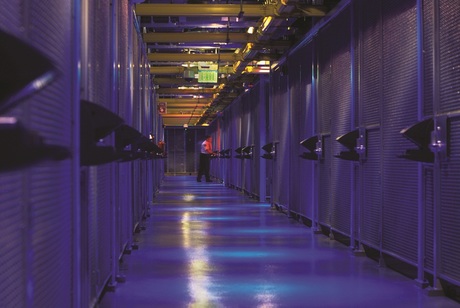Why are we building data centres?

You’d think that with the consolidation of computing driven by blade servers and virtualisation that the number and size of data centres would be shrinking. But the opposite is true.
Our thirst for computing power and storage is unquenchable. Less than a decade ago, each workload would run on its own server. Those servers consumed several rack units, meaning that many racks were needed for even moderately sized businesses.
Today, a 6RU unit can hold up to eight blades and each of those can run 20 or 30 virtual servers. That could have easily filled three or four full-size racks.
The problem is that while computing density is increasing, our desire is outpacing the ability to add more computing power. According to Ross Hammond, the director of Telecom Business for Emerson Network Power Australia and New Zealand, “The market is not slowing down, it’s compressing.”
This is why businesses are continuing to expand their data centres and add new ones rather than reduce. With a shift to cloud computing, you could expect to be closing or reducing your data centre down but the reality is that the need to maintain systems on-site is not diminishing.
Part of the challenge is that businesses are operating in far more elastic environments. Depending on economic cycles, there are times when data centres aren’t fully utilised but spikes in activity mean that data centres need to be designed for periods of higher activity.
According to Hammond, there’s a very definite trend not only in the data centre infrastructure market but also the broader technology market: long-term crests and troughs have been replaced with shorter-term hikes and spikes.
While data centre utilisation is not at 100% - some sources suggesting that only about 60% of existing data centre capacity is being used - the compressed project cycles and requirements for increased computing and storage are outpacing the capacity to build new infrastructure even with the buffer of unused capacity. Some estimates suggest that if we stopped adding data centre capacity globally today, we would run out of capacity in about nine months.
The other factor that’s driving the burgeoning growth of data centres is the desire to reduce network latency. Both Amazon and Rackspace have recently added data centres to address performance and data sovereignty concerns. But businesses are also doing the same.
“What we’re seeing points very strongly to the need for fluidity in infrastructure. Yes, there will be rapid contractions just as often as escalations in demand, but companies can’t just stop investing. If they do, they risk losing their competitive advantage. Likewise, vendors that can’t match this fluidity in the solutions they offer will fall behind,” said Hammond.
For many businesses, local data centre access is a critical consideration. Not only do they want the data held onshore with low-latency connectivity, there’s a degree of psychological comfort in knowing where the data is held and having control over the assets.
Every six months, Emerson Network Power releases its Market Pulse survey, examining infrastructure project. The latest report can be found at http://www.emersonnetworkpower-partner.com/default.aspx?ArticleID=10830.
Optical fibre: the foundation of AI-ready data centres
A high-performance optical fibre foundation is the critical infrastructure that will ensure data...
Why businesses can't afford to wait on slow data
GPUDirect Storage cuts out the CPU acting as middleman and allows data to flow directly between...
The future of data centres in the age of AI
AI will continue to drive transformative changes within the data centre industry, especially...




